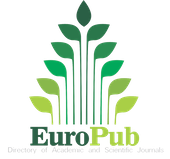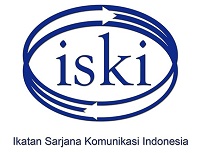Model City Branding Melalui Revitalisasi Sungai Cikapundung
Abstract
Keywords
Full Text:
PDFReferences
Damayanti, R. E. P., Nurhadi, K., & Andini, I. (2015). Pengaruh Revitalisasi Sungai Terhadap Kinerja Sistem Drainase Kali Pepe Hilir Kota Surakarta. Region, 6(2), 51–60.
Dinnie, K. (2010). Introduction to the theory of city branding. In City branding: Theory and Cases (pp. 3–7). https://doi.org/10.1057/9780230294790
Indriani, J., & Kuswoyo, C. (2017). Pengaruh City branding Pada City Image Dan Keputusan Berkunjung Wisatawan Ke Kabupaten Purwakarta. Jurnal Manajemen Maranatha, 17(1), 41. https://doi.org/10.28932/jmm.v17i1.410
Kavaratzis, M. (2007). City Marketing: The Past, the Present and Some Unresolved. Geografy Compass, 1(3), 695–712. https://doi.org/https://doi.org/10.1111/j.1749-8198.2007.00034.x
Kotler, P., & Keller, K. L. (2008). Manajemen Pemasaran. Jakarta: PT Indeks.
Mathieson, A., & Wall, G. (2005). Tourism : Economic, Phisical, and Social Impact. New York: John Wiley & Son Inc.
Maylanny, C., & Faridani, S. (2015). City branding Kota Bandung melalui Bus Bandros. Jurnal Komunikator, Vol.7 No.(1), 88–92.
Nugraha, A. (2019). Teks Wawancara. Bandung: Bagian Program Data Informasi Dinas Pariwisata dan Kebudayaan Kota Bandung.
Papp-Vary, A. (2011). C Ity -B Uilders Vs . C Ity -D Efenders : 3(1), 555–562. Retrieved from http://media.bizwebmedia.net/sites/146527/upload/documents/branding_1.pdf
Purwianti, L., & Ratna Dwi Lukito, Y. (2014). Analisis Pengaruh City branding Kota Batam Terhadap Brand Attitude (Studi Kasus Pada Stakeholder Di Kota Batam). Jurnal Manajemen, 14(1), 61–80.
Rozalena, A. (2017). Makna Simbolik Komunikasi Merek Kuliner Khas Palembang di Bandung. MediaTor, 10(2), 257–267. https://doi.org/https://doi.org/10.29313/mediator.v10i2.3197
Rozalena, A. (2019). City branding Models Base On Artificial Tourism. Bandung: 1st International Conference on Social Science, Universitas Komputer. 1–11.
Wandari, L. A., Kumadji, S., & Kusumawati, A. (2014). Pengaruh City branding “ Shining Batu ” Terhadap City Image Dan Keputusan Berkunjung Wisatawan Ke Kota Batu Tahun 2014. Jurnal Administrasi Bisnis, 16(1), 1–6.
Yuliana, A. Y. (2019). Teks Wawancara. Bandung: Satuan Kerja Operasi dan Pemeliharaan Sumber Daya Air Balai Besar Wilayah Sungai (BBWS) Citarum.
DOI: https://doi.org/10.29313/mediator.v12i2.5026
Refbacks
- There are currently no refbacks.

This work is licensed under a Creative Commons Attribution 4.0 International License























